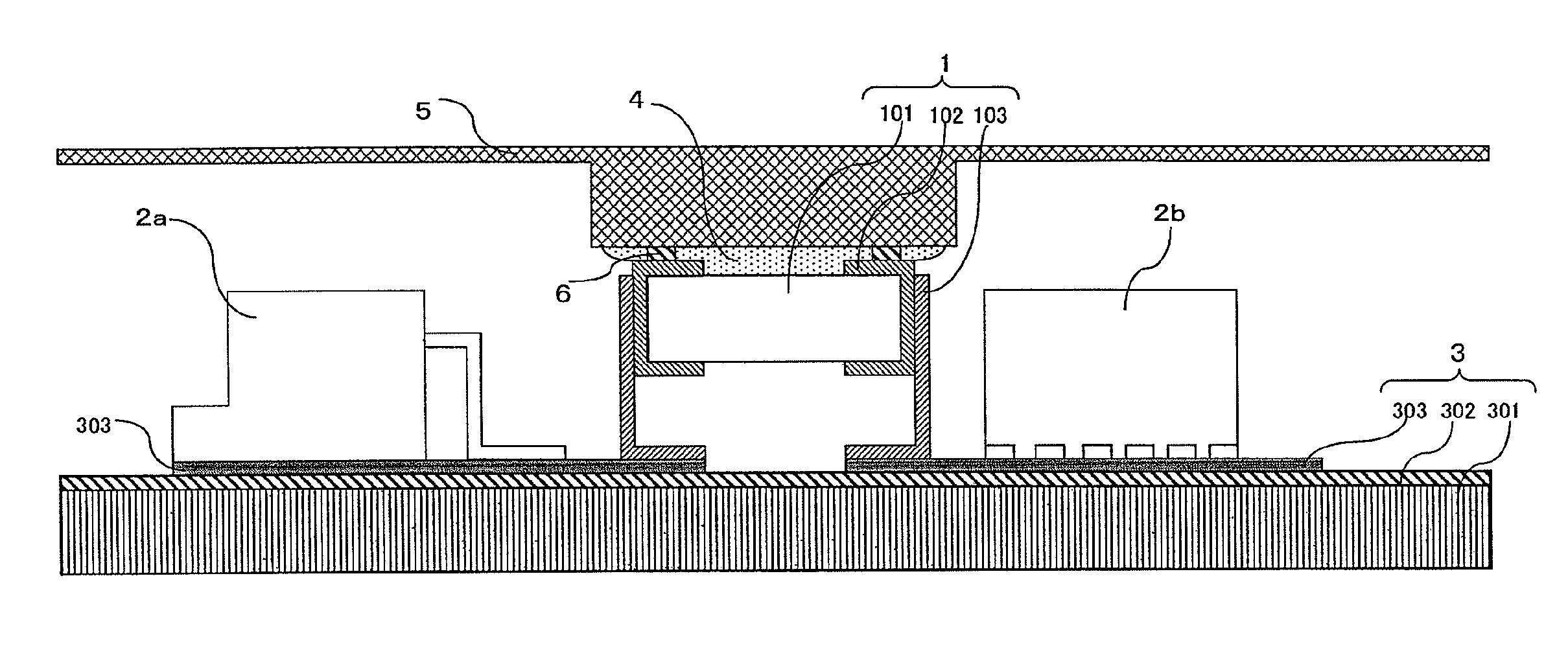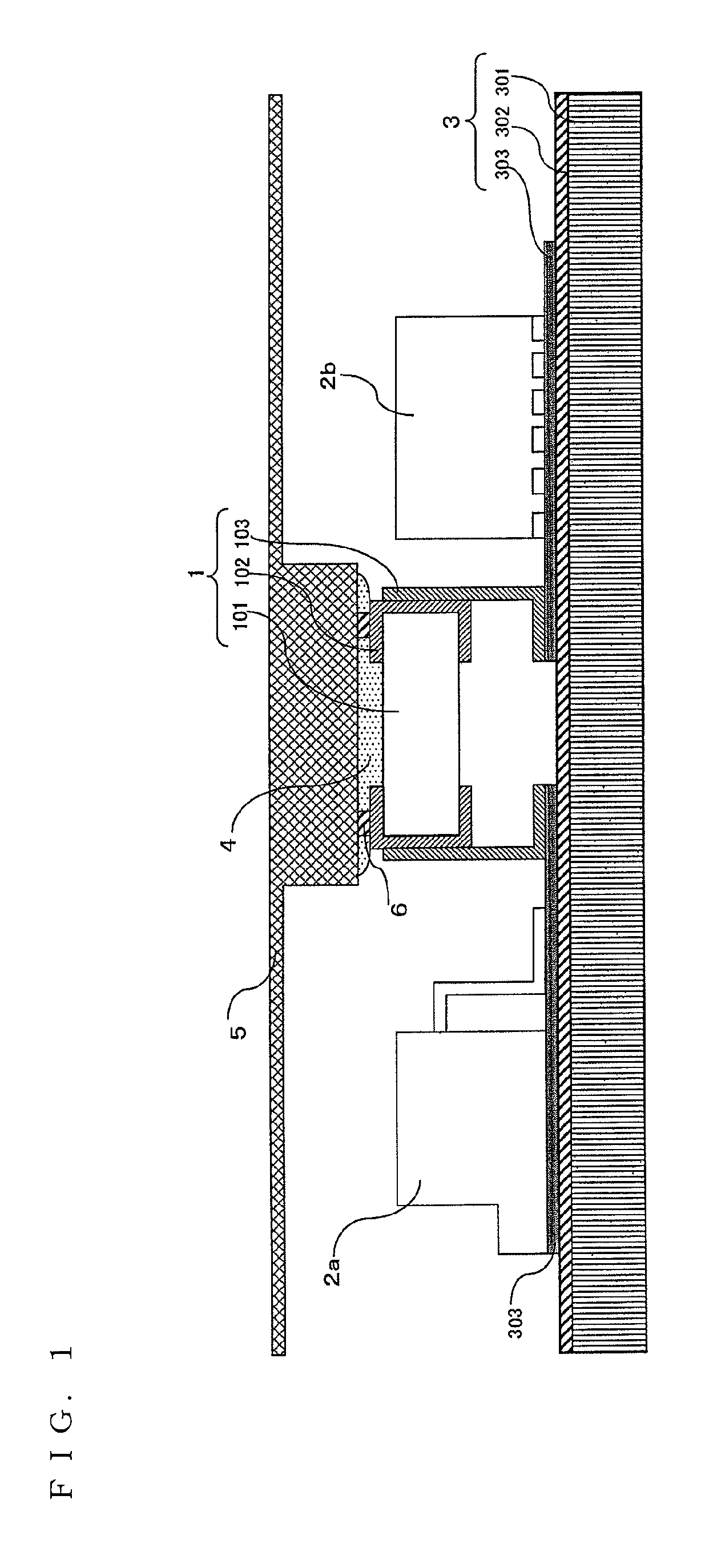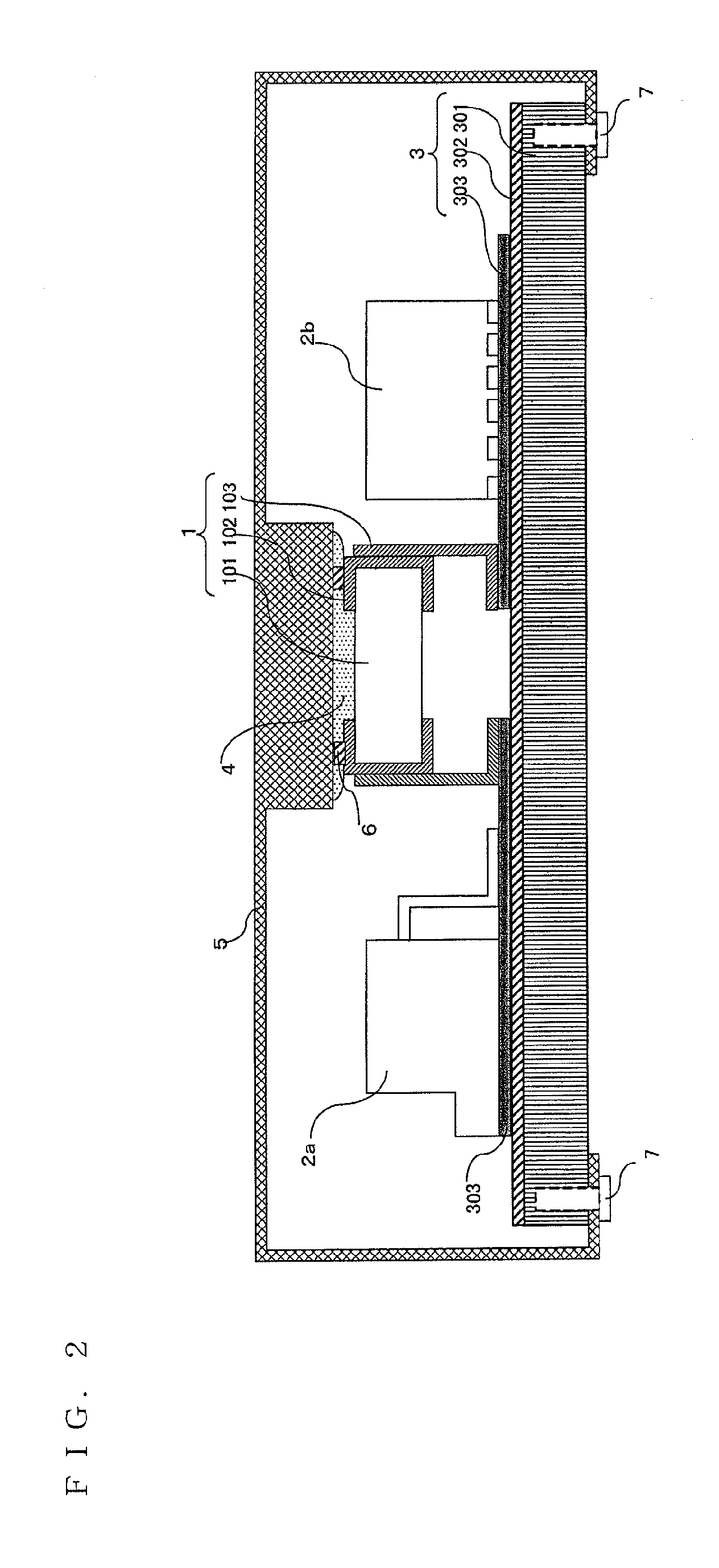Cooling structure of capacitor and inverter device
a cooling structure and capacitor technology, applied in the field of capacitors, can solve the problems of mechanical stress, insufficient reliability of the capacitor, cracks in the laminated ceramic capacitor, etc., and achieve the effect of suppressing the temperature rise of the capacitor and improving reliability
- Summary
- Abstract
- Description
- Claims
- Application Information
AI Technical Summary
Benefits of technology
Problems solved by technology
Method used
Image
Examples
embodiment 1
Preferred Embodiment 1
[0038]Hereinafter, a cooling structure of a capacitor and an inverter device according to a preferred embodiment 1 of the present invention will be described with reference to FIG. 1.
[0039]FIG. 1 is a schematic side view showing the configuration of the cooling structure of the capacitor and the inverter device using the cooling structure of the capacitor and, in this case, the schematic side view shows only a U phase of an inverter circuit as a representative. Furthermore, an actual inverter device includes a heat sink and an inverter case; however, in this case, the heat sink and the inverter case are not shown.
[0040]As shown in FIG. 1, in the inverter device according to the preferred embodiment 1, a snubber capacitor 1 and semiconductor switching elements 2a and 2b of upper and lower arms of the inverter circuit are mounted on a metal circuit board 3. The semiconductor switching elements 2a and 2b and other semiconductor switching elements of V phase and W ...
embodiment 2
Preferred Embodiment 2
[0048]Next, a cooling structure of a capacitor and an inverter device according to a preferred embodiment 2 of the present invention will be described with reference to FIG. 2.
[0049]FIG. 2 is a schematic side view showing the configuration of the cooling structure of the capacitor and the inverter device using the cooling structure of the capacitor and, in this case, as in FIG. 1, the schematic side view shows only a U phase of an inverter circuit as a representative. Furthermore, an actual inverter device includes a heat sink and an inverter case; however, in this case, the heat sink and the inverter case are not shown. Incidentally, in FIG. 2, the same reference numerals are given to those identical to or equivalent to constituent elements in the preferred embodiment 1 shown in FIG. 1.
[0050]The preferred embodiment 2 is different from the preferred embodiment 1 on the points that a heat dissipation plate 5 is extended and the ends thereof and a metal base pla...
embodiment 3
Preferred Embodiment 3
[0052]Next, a cooling structure of a capacitor and an inverter device according to a preferred embodiment 3 of the present invention will be described with reference to FIG. 3.
[0053]FIG. 3 is a schematic side view showing the configuration of the cooling structure of the capacitor and the inverter device using the cooling structure of the capacitor and, in this case, as in FIG. 1, the schematic side view shows only a U phase of an inverter circuit as a representative. Incidentally, in FIG. 3, the same reference numerals are given to those identical to or equivalent to constituent elements in the preferred embodiment 1 shown in FIG. 1.
[0054]In the preferred embodiment 3, a snubber capacitor 1 and semiconductor switching elements 2a and 2b that constitute the inverter circuit are mounted on a circuit board 3 and the thus configured snubber capacitor 1 and inverter circuit are covered with an inverter case 8 that is an outer covering; and the inverter case 8 serve...
PUM
 Login to View More
Login to View More Abstract
Description
Claims
Application Information
 Login to View More
Login to View More - R&D
- Intellectual Property
- Life Sciences
- Materials
- Tech Scout
- Unparalleled Data Quality
- Higher Quality Content
- 60% Fewer Hallucinations
Browse by: Latest US Patents, China's latest patents, Technical Efficacy Thesaurus, Application Domain, Technology Topic, Popular Technical Reports.
© 2025 PatSnap. All rights reserved.Legal|Privacy policy|Modern Slavery Act Transparency Statement|Sitemap|About US| Contact US: help@patsnap.com



